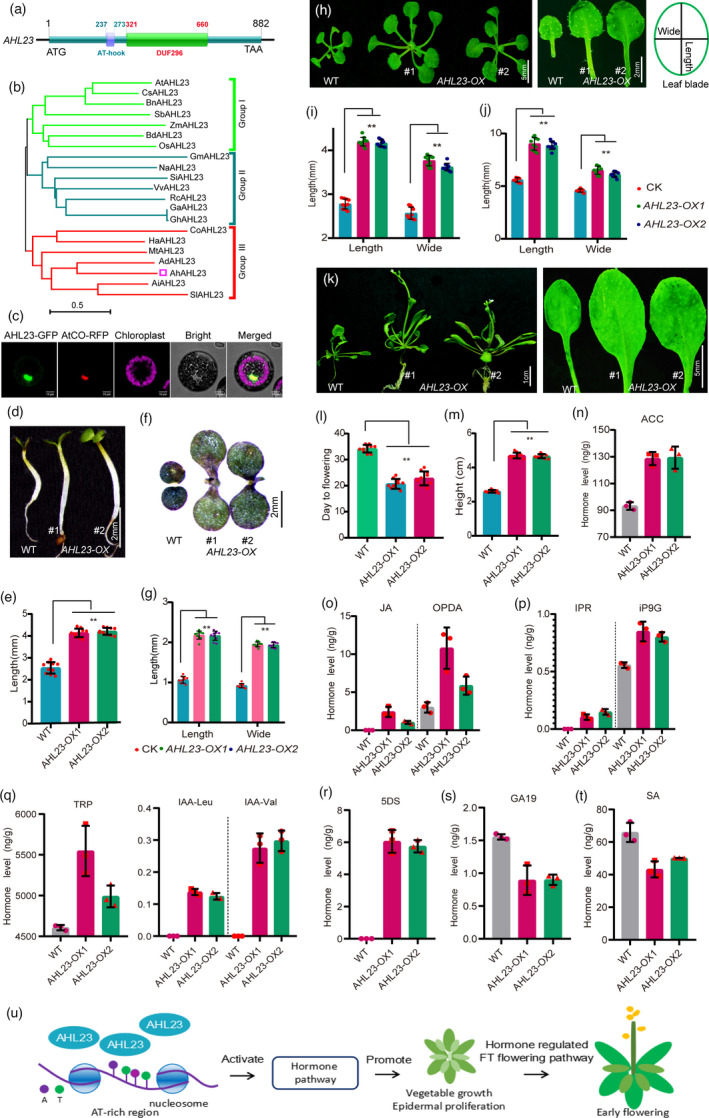Figure 7.

Integrated analysis of the molecular function of peanut AHL23. (a) Schematic diagram of the genome structure of AHL23. (b) Phylogenetic tree of AHL23 homologs in a diversity of plant species. (c) Subcellular localization of AHL23 protein at the nucleus of an Arabidopsis protoplast cell, scale bar is 10 μm. (d) Hypocotyl phenotype of AHL23‐OX lines and WT at seedling stage. (e) measurement of hypocotyl length in AHL23 transgenic and WT plants (n = 10). (f) Cotyledon phenotype of AHL23‐OX lines and WT at seedling stage. (g) measurement of cotyledon length and width in AHL23 transgenic and WT plants (n = 10). (h) Leaf morphology in AHL23‐OX and WT plants at vegetable growth stage. (i‐j) Measurement of leaf length and width in AHL23‐OX and WT plants at vegetative (i) and reproductive (j) stages (n = 10). (k) The phenotype of the entire plant and mature leaf in AHL23‐OX and WT plants at reproductive stage. (l) Flowering time statistics in the different plant lines (n = 10). (m) Plant height investigation in WT and AHL23‐OX lines (n = 10), (n‐t) Plant hormone detection results in AHL23‐OX and WT plants after application of LC‐MS, histograms indicate the mean ± SD of three biological repeats. (u) Putative model of peanut AHL23 regulated mechanism in plant growth. All asterisks indicate significant differences when compared with the WT plants (T‐test, *P < 0.05, **P < 0.01).
